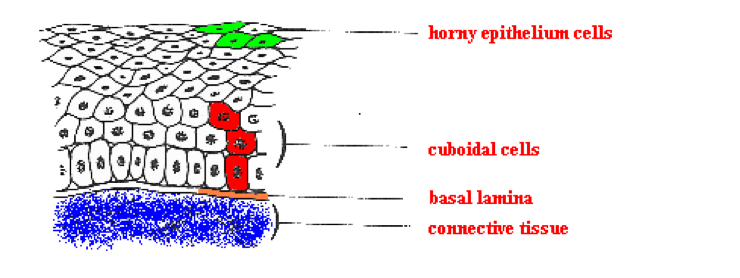Sign up for FlowVella
Sign up with FacebookAlready have an account? Sign in now
By registering you are agreeing to our
Terms of Service
Loading Flow


31. Epithelial tissue is a sheet of cells that covers a body surface or lines of a body cavity. It occurs in the body as covering and lining epithelium, and glandular epithelium. Covering and lining epithelium forms the outer layer of the skin, dips into and lines the open cavities of the cardiovascular, digestive and respiratory systems, and covers the walls and organs of the closed ventral body cavity. Glandular epithelium fashions the glands of the body. Epithelium has many functions as interface tissue such as protection, absorption, filtration, excretion, secretion, and sensory reception. They also have cellularity, as it is composed almost entirely of close-packed cells. Epithelial cells fit close together to form continuous sheets. All epithelia exhibit polarity by having an apical surface and a lower attached basal surface. Some have cilia that propel substances along their free surface. All epithelial sheets rest upon and are supported by connective tissue. Even though it is innervated (supplied by nerve fibers), it is avascular (contains no blood cells). Epithelium also has a high regeneration capacity.
Chapter 4